In a recent report on Iran's obsession with beauty, the Guardian revealed that the country's plastic surgery craze has not only fueled a growing industry but has also spawned dangerous practices and plenty of regret.
Over the last few years, Iran has gained notoriety for its skyrocketing rate of plastic surgery. Back in 2001, the Telegraph's Philip Sherwell wrote that "young Iranians prefer plastic surgery to politics," pointing out that the "hottest status symbol for young Iranians is a nose job." And by 2006, the Islamic nation had already earned the title of the "nose job capital of the world," according to a Time magazine report at the time.
In its March 1 report, the Guardian, citing data from Iran's conservative Etemad newspaper, notes that about 200,000 Iranians undergo rhinoplasty every year. Referencing a study conducted by the Rhinology Research Society of Iran and Johns Hopkins University, the report added that the "rate of nose jobs per capita in Iran is seven times that in America."
Though most of those who go under the knife are women, a growing number of men in Iran have started to get caught up in the trend as well.
According to a October 2012 report in Iran Daily, Iranian men are now believed to "account for a third of cosmetic surgeries in the country." Cosmetic surgeon Dr. Mehran Aqagoli told the English-language newspaper that about 10 percent to 20 percent of rhinoplasty surgeries that are done in Iran are "unnecessary" and are only carried out because they are considered fashionable.
However, rhinoplasty's popularity is also not limited to Iranians in their home country. According to cosmetic surgeons in the United States, there is a rhinoplasty trend among Iranian-Americans and other Americans of Middle Eastern descent in the U.S. as well.
Dr. Sam Rizk, a New York-based facial plastic surgeon who specializes in a procedure known as "ethnic rhinoplasty," told The Huffington Post that while his patient base is about 40 percent "ethnic," 20 percent to 25 percent of his patients are of Middle Eastern descent.
According to Rizk's website, the term "ethnic rhinoplasty" is used to describe "nose jobs on an African American or patients of African descent, Hispanic/Latino, Middle Eastern/Mediterranean, Asian/Indian, and any other ethnicity without the typical Caucasian white nose."
When asked to speculate as to why rhinoplasty is such a popular procedure in Iran and among Iranian-Americans, Rizk said: "The nose is one of their most important features because everything else is covered -- with their bodies covered, faces covered, the most prominent feature is their nose."
Rizk, who was born in Egypt, added that he has treated many clients who have undergone rhinoplasty surgery in Iran. The result, he said, is often not becoming.
"I can't generalize, but the ones I've seen -- they come in with pinched and over-scooped noses," he said, adding that he believes many surgeons in the Middle East continue to use outdated techniques "from the '80s."
"Who knows? Maybe they aren't surgeons at all," he said.
Indeed, as the Guardian indicates, there has been a dark side to the growing popularity of cosmetic surgery in Iran.
For one thing, the report points out that an increasing number of unlicensed practitioners have begun to crop up in the country, spawning a dangerous plastic surgery black market that has resulted in an inevitable rise of botched operations.
Moreover, as bad surgeries and unnecessary procedures increase, more and more people who have gone under the knife are reportedly regretting their decision.
"Recently, a health official announced that around 30 percent of people who have cosmetic surgery are dissatisfied with the results," a psychiatrist and family counselor, identified only as "Reza," told the Guardian.
"There's a lot that can happen," Rizk said of black-market surgeries. "The nose is the most complicated part of the body. You have to understand the outside of a nose and the inside, understand the physiology. Unless you [understand] the functional and cosmetic implications of the nose job, you won't be able to perform."
He added that a slew of medical problems -- including sinusitis and a collapsed nose -- can arise due to a botched surgery.
Of course, Iran is not the only place in the world with a plastic surgery obsession. Nearly 15 million cosmetic procedures were performed worldwide in 2011, according to a recent study conducted by the International Society of Aesthetic Plastic Surgeons (ISAPS).
The Economist, reporting on the study, noted that more plastic surgeries per capita were conducted in South Korea -- sometimes dubbed the "plastic surgery capital of the world" -- in 2011.
According to an earlier New York Times report, a survey conducted in 2009 by the market research firm Trend Monitor revealed that "one of every five women in Seoul between the ages of 19 and 49 said they had undergone plastic surgery."
Greece, Italy and the United States also have very high cosmetic surgery rates, according to the ISAPS survey. Iran, incidentally, didn't even make the top 25 list.
